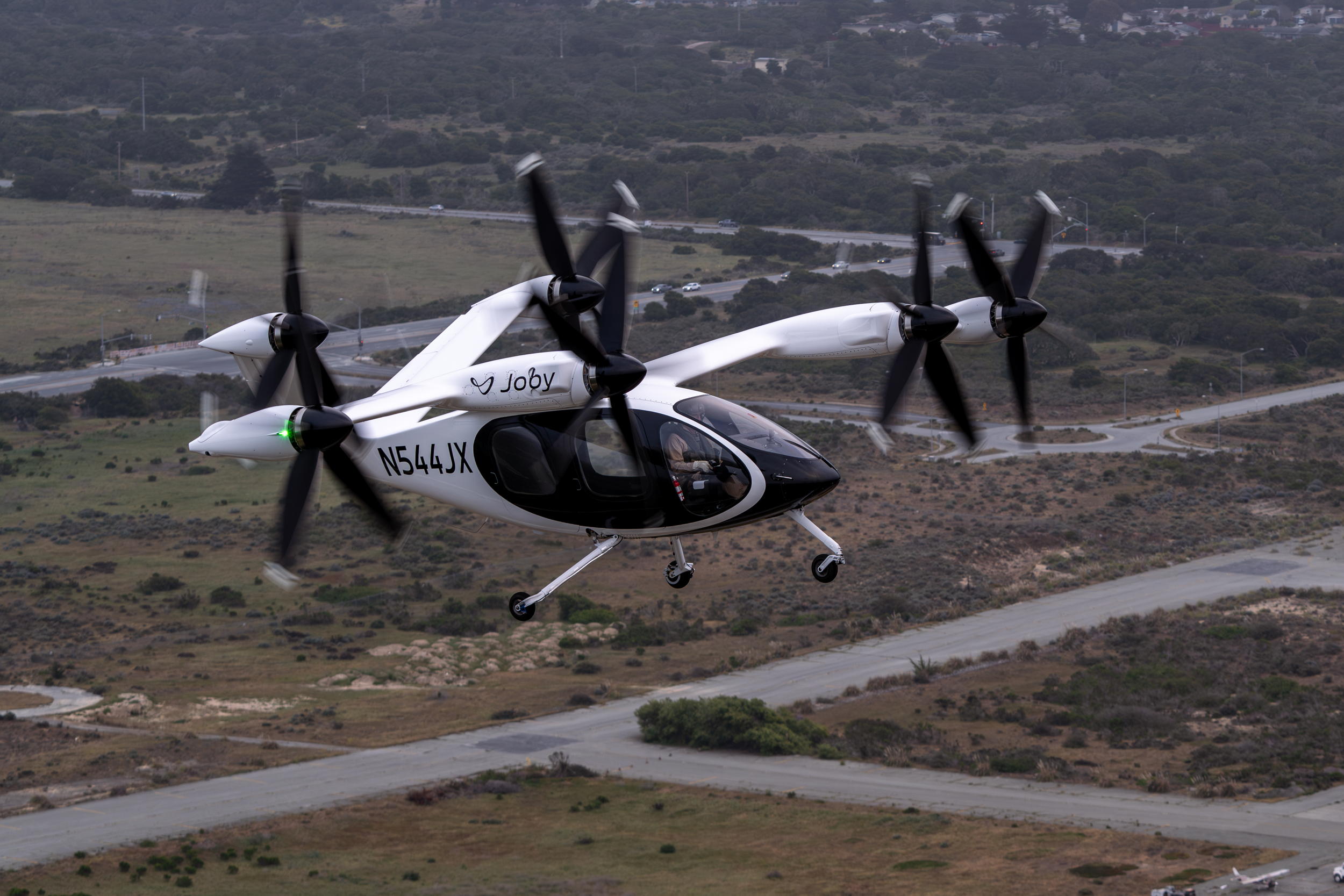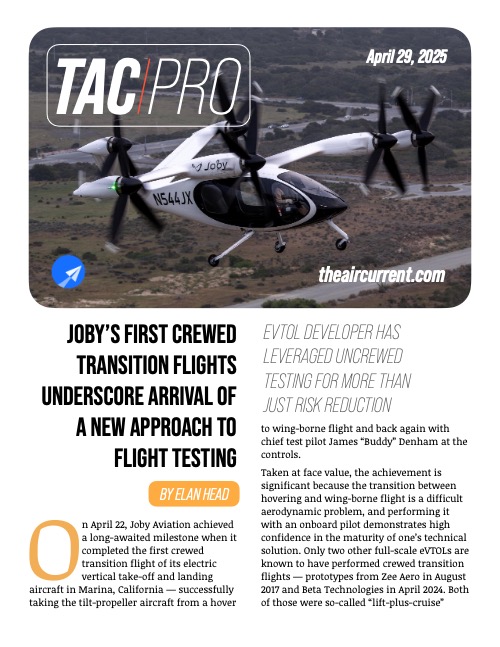Log-in here if you’re already a subscriber
On April 22, Joby Aviation achieved a long-awaited milestone when it completed the first crewed transition flight of its electric vertical take-off and landing aircraft in Marina, California — successfully taking the tilt-propeller aircraft from a hover to wing-borne flight and back again with chief test pilot James “Buddy” Denham at the controls.
Taken at face value, the achievement is significant because the transition between hovering and wing-borne flight is a difficult aerodynamic problem, and performing it with an onboard pilot demonstrates high confidence in the maturity of one’s technical solution. Only two other full-scale eVTOLs are known to have performed crewed transition flights — prototypes from Zee Aero in August 2017 and Beta Technologies in April 2024. Both of those were so-called “lift-plus-cruise” designs, which use different sets of propellers for hovering and forward flight.
Related: Special Report: Seeking lessons for eVTOL pilot training in the F-35
Joby’s is the first tilt-propeller eVTOL known to have performed a crewed transition flight, and the company swiftly repeated the trick across multiple flights with two additional test pilots in the days that followed. Yet, the milestone was not as momentous as it would have been in a conventional flight test program, because Joby aircraft have already performed hundreds of successful transition flights while being piloted remotely, in addition to more than a hundred crewed sorties in hovering and low-speed flight.
The most significant aspect of the crewed transition flights may be what they signal for flight testing more broadly, which is how far a program can go with uncrewed testing before risking the life of a human pilot.
“Fifteen-plus years ago, when I first started working in this field, we had a lot of internal conversations around the general philosophic view on UAS, or remotely piloted aircraft, and what the value of them is,” Joby chief product officer Eric Allison told The Air Current in an interview. “The possibility of incorporating various different flavors of remotely piloted aircraft into an actual flight test program, how does that let you accelerate it? How does it let you do things differently, think differently about the way you construct the overall [program]? And that’s exactly what we’re doing now.”
Subscribe to continue reading...Subscribe to Continue Reading
Our award-winning aerospace reporting combines the highest standards of journalism with the level of technical detail and rigor expected by a sophisticated industry audience.
- Exclusive reporting and analysis on the strategy and technology of flying
- Full access to our archive of industry intelligence
- We respect your time; everything we publish earns your attention


